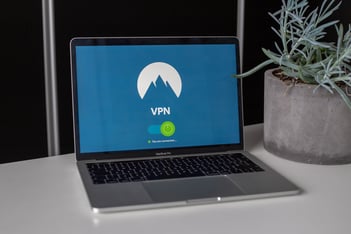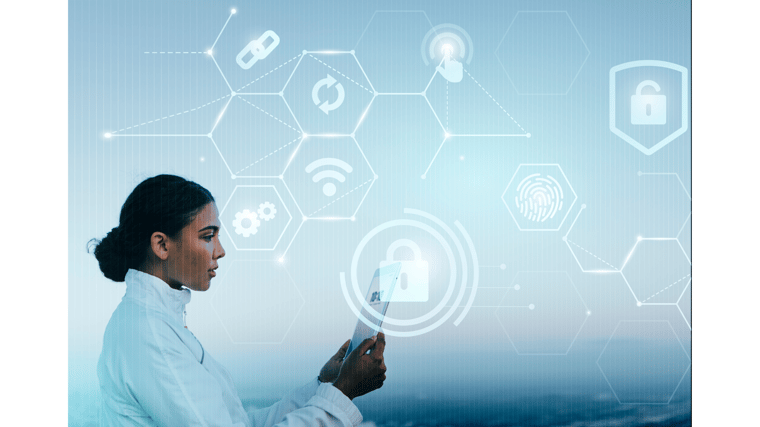In an age where remote work has become a cornerstone of the modern workplace, especially due to COVID-19, remote access has become necessary for businesses. Staff work from home or collaborate with a globally dispersed team, revolutionizing how we work and communicate. It’s predicted that by 2025, 32.6 million Americans will work remotely.
But what exactly is remote access? How does a business go about implementing it? Find out below.
Read: How to Revolutionize Your Remote Work Experience
What Is Remote Access?
Remote access is the ability for a remote user to access a device, system or network from any location. It’s made possible with protocols, tools, software and connections that allow users to easily connect with remote systems and access files, resources and data.
Remote access allows us to bridge physical gaps and stay connected like never before since it eliminates the need for users to be physically present. Staff can work from essentially anywhere at any time on any device. It can also help businesses stay connected with customers or partners in real-time, which is vital for help desks and managed service providers (MSPs) like Thriveon.
How Does Remote Access Work?
Remote access can work in two main ways, though they both require an internet connection:
- A virtual private network (VPN): VPNs are the most common way to securely connect to a private network over the internet. They provide a safe, encrypted and private connection between two devices over the internet by creating a secure tunnel that maintains privacy and smooth traffic flow. The VPN server functions as a gateway at the network’s edge, directing traffic to the appropriate hosts within the network.
- Remote access software: Remote access software lets authorized users access networks and devices remotely; you can see the screen, access files and use apps on the device as if you were there in person. Some software can filter which users have remote access privileges and track device usage so you know who has access to what data and when. However, this software must be downloaded and installed on both devices so the local device can access the remote one.
Types of Remote Access
There are three types of remote access: VPNs (which we have already discussed); analog modems, which use a hard-wired or Wi-Fi network interface; and broadband, which offers high-speed connections. Several sub-types of broadband exist.
- Cable broadband: This offers shared bandwidth to many users, so companies may see data rates slow during peak business hours.
- Digital Subscriber Line (DSL): DSL uses a telephone network with a broadband modem to provide high-speed networking. However, it only works within a limited physical distance.
- Cellular internet services: These provide mobile devices a wireless connection from any location where a cellular network is available.
- Satellite internet services: These use telecommunications satellites to provide internet access where land-based internet isn’t available.
- Fiber optics technology: This is best used when companies need to transfer large amounts of data quickly and easily.
Common Remote Access Protocols
Protocols govern how a device can remotely access and communicate with a network.
- Point-to-Point Protocol (PPP): This data link protocol sets up a direct connection between two connected devices via a telephone network or the internet. It’s widely used in broadband communications.
- Point-to-Point Tunneling Protocol (PPTP): This was an old network protocol for implementing VPNs, but it’s considered obsolete due to its vulnerability to cyber attacks.
- Internet Protocol Security (IPSec): This set of security protocols creates encrypted connections between devices and ensures data is securely transmitted over networks.
- Remote Desktop Protocol (RDP): This proprietary protocol developed by Microsoft allows users to remotely access and control another device over a network connection.
- Remote Authentication Dial-In User Service (RADIUS): This protocol enables remote access servers to communicate with a central server to authenticate dial-in users and authorize their access to the requested system.
Only protocols include Layer Two Tunneling Protocol (L2TP), Remote Access Services (RAS), Serial Line Internet Protocol (SLIP) and Terminal Access Controller Access Control System (TACACS).
Benefits and Risks of Using Remote Access
As you can imagine, remote access provides businesses with many benefits.
- Users can easily work and manage files and data, no matter their location.
- Employees can collaborate from anywhere, and businesses can tap into talent and expertise all over the world.
- Higher productivity, flexibility and employee satisfaction come with having uninterrupted service and a workspace that meets your employees’ preferences.
- IT professionals can remotely troubleshoot, minimizing downtime and reducing the need for on-site visits.
- By scaling back physical offices, utilities and equipment, companies can save a ton of money. Plus, employees can save time and money on commutes.
- With remote access, your organization can meet cybersecurity compliance requirements and have a robust disaster recovery plan as you ensure business continuity and efficiently handle data.
However, with all these benefits, there are some downsides to remote access. The time and money it takes to set up the remote systems and grant permissions can be a lot, not to mention training staff on how to use the remote access tools.
Best Practices When Using Remote Access
With any IT solution, implementing various best practices can help protect your device, network, files and data.
- Implement two-factor authentication for an extra layer of security, which prevents unauthorized users from gaining access even if they have the login credentials.
- Account lockouts are also crucial; they lock someone out after they enter the wrong password a set number of times. This is particularly helpful against hackers trying brute-force attacks.
- Use encryption to protect data moving between remote devices and systems.
- Limit access permissions. Only grant remote access to users who need it for their jobs.
- Maintain strong passwords and firewalls, and implement antimalware and antivirus software.
- You should also keep software, remote access tools and your devices and systems up to date with the latest security patches and updates to mitigate vulnerabilities.
Thriveon and Remote Access
We understand the importance of using any device, anywhere and anytime. That’s why we specialize in helping create modern workplaces by implementing Microsoft Teams. Microsoft Teams has robust features that will benefit you, no matter if working remotely or in person.
Schedule a meeting with us now to find out how Microsoft Teams can better your workplace.
Modern Workplace Digital Transformation Assessment

